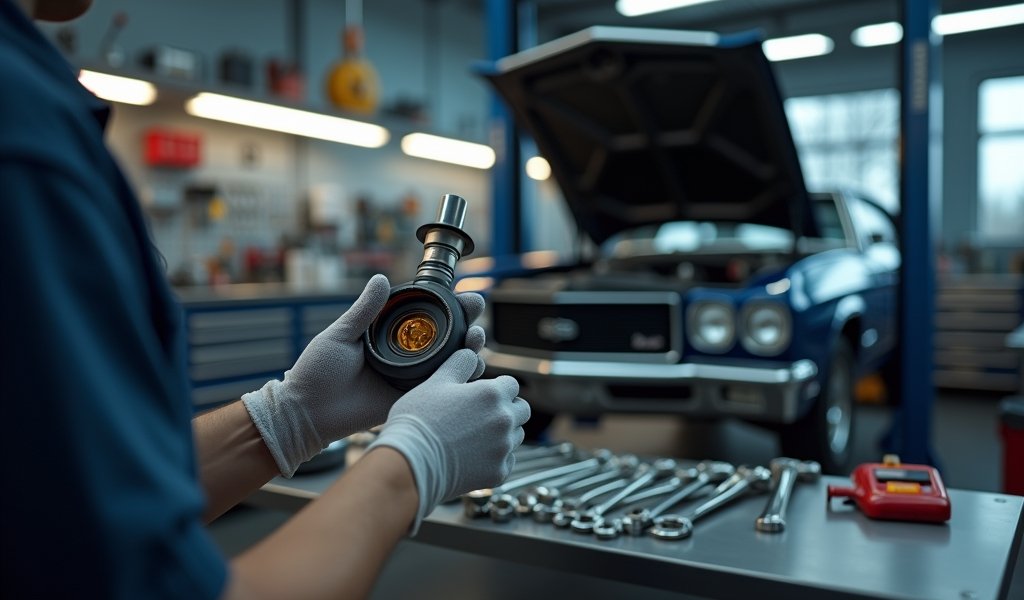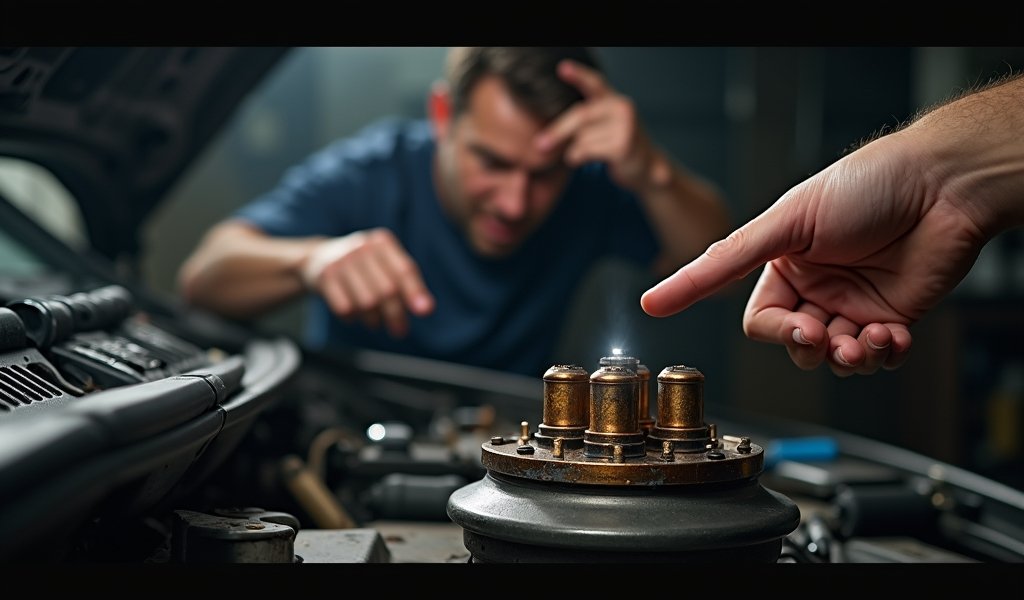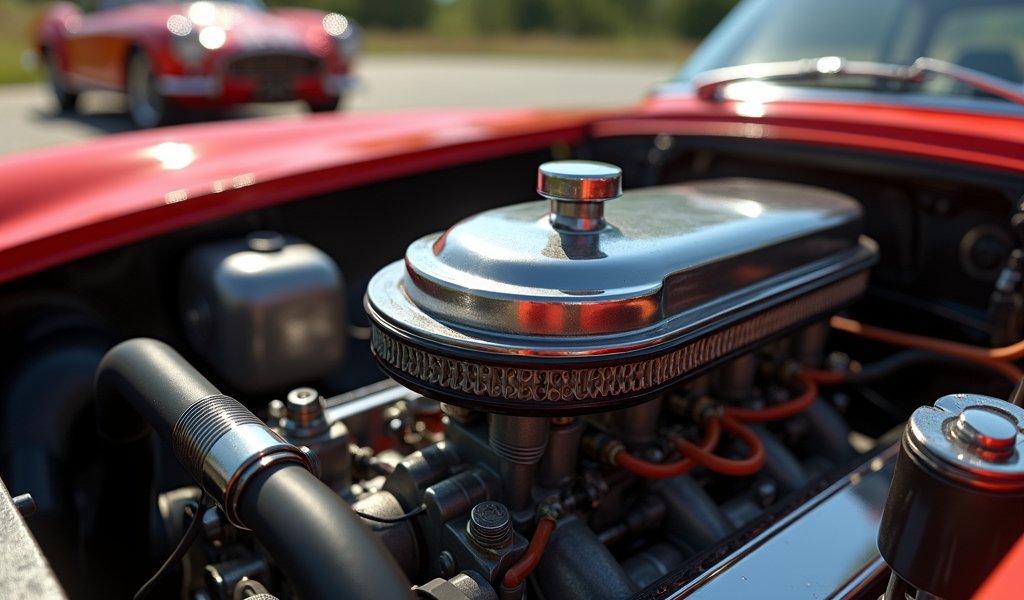Overview
This article provides a detailed guide on distributor caps and rotors, explaining their function, how to inspect them, signs of failure, and maintenance best practices. Regular inspection of these critical ignition components can prevent breakdowns, with recommendations to check them every oil change and replace every 50,000 miles regardless of condition.
Table of Contents
- What is a Distributor Cap and Rotor?
- Importance of Regular Inspection
- Signs of a Failing Distributor System
- Step-by-Step Inspection Process
- Common Problems and Diagnoses
- When to Replace vs. Clean
- Choosing Quality Replacement Parts
- Preventative Maintenance Tips
- Conclusion
- Frequently Asked Questions
What is a Distributor Cap and Rotor?
The distributor cap and rotor are critical components of your vehicle’s ignition system that work together to deliver the spark that fires your engine. Think of the distributor cap as a traffic controller and the rotor as its assistant, directing high-voltage electricity from your ignition coil to each spark plug in the precise firing order your engine needs.
The distributor cap sits atop the distributor assembly, featuring a series of terminals around its perimeter that connect to each spark plug via thick wires. Inside this cap, the rotor spins in sync with your engine, receiving electrical current from the coil and directing it to each terminal in sequence as it rotates.
Most caps are manufactured from phenolic plastic or reinforced nylon designed to withstand extreme heat and electrical current. The rotor typically has a simple design—a metal contact point mounted on an insulated plastic base—but its job is anything but simple. Together, these parts ensure your engine runs smoothly by precisely timing the spark delivery to each cylinder.

Importance of Regular Inspection
I can’t stress enough how critical regular distributor cap and rotor inspection is to your vehicle’s overall health. In my 25 years working under hoods, I’ve seen countless breakdowns that could’ve been prevented with a simple 10-minute check of these components.
Most manufacturers recommend inspecting your distributor system every 25,000 miles or annually, whichever comes first. This schedule might need adjustment based on your driving conditions—dusty environments, extreme temperatures, or high humidity can accelerate wear.
Regular inspections save you money in three ways: preventing cascade failures where one bad component damages others, avoiding towing fees from sudden breakdowns, and maintaining optimal fuel efficiency. When your ignition system is firing correctly, your engine runs more efficiently, potentially saving hundreds in fuel costs annually.
Plus, there’s nothing worse than being stranded because of a $20 part that could have been replaced during routine maintenance. Trust me, I’ve made those roadside service calls, and they’re always more expensive than preventative care.
Signs of a Failing Distributor System
Your vehicle has ways of telling you when the distributor system is struggling. Learning to recognize these symptoms can help you address issues before they leave you stranded.
Visual Warning Signs
- Hairline cracks on the cap surface or around terminal towers
- Carbon tracking (black lines) inside the cap indicating electrical arcing
- Corroded or burned contacts showing discoloration
- Damaged rotor tip or worn spring contact
- Moisture or oil contamination inside the cap
Performance Symptoms
- Engine misfires, especially during damp weather
- Difficult starting or complete failure to start
- Decreased fuel efficiency as combustion becomes less efficient
- Rough idling or stalling at intersections
- Illuminated check engine light with misfire codes
Sensory Clues
- Unusual engine vibrations that change with RPM
- Tapping or clicking sounds from the distributor area
- Decreased power when accelerating
- A subtle “miss” in the engine’s rhythm that wasn’t there before
In my experience, these symptoms often worsen in wet weather, as moisture exacerbates electrical leakage through tiny cracks or carbon tracks. If you notice your car running rough on rainy days but fine when dry, your distributor system should be the first place you look.
Step-by-Step Inspection Process
Let me walk you through inspecting your distributor cap and rotor the way I’ve taught countless apprentice mechanics over the years. This process takes about 15-20 minutes and requires only basic tools.
Safety First
Before diving in, ensure your engine is cool and the ignition key is removed. I always disconnect the negative battery terminal to prevent any accidental electrical discharge—a habit that’s saved me from a few surprising zaps over the years!
Tools You’ll Need
- Clean shop rags
- Compressed air (optional but helpful)
- Electrical contact cleaner
- Small wire brush
- Flashlight or inspection light
- Basic hand tools for cap removal
- Multimeter (for advanced testing)
The Inspection Process
- Locate the distributor cap: Usually found on the engine block or cylinder head on older vehicles. Some models might require removing air intake components for proper access.
- Document wire positions: Before removing anything, take a photo of the wire arrangement or label each wire and its corresponding position. Trust me on this one—it’s easy to forget which wire goes where, and incorrect reassembly will have your engine running like a washing machine full of rocks.
- Remove the distributor cap: Carefully unclip or unscrew the retaining mechanisms and gently lift the cap without pulling on the spark plug wires. On some vehicles, you may need to remove the entire distributor cap with wires attached.
- Examine the cap exterior: Look for physical damage, cracks, or heat stress. Pay special attention to the areas around the terminals and the center carbon button.
- Inspect the cap interior: Check for carbon tracking between terminals, which indicates voltage leakage. Examine each terminal for corrosion, pitting, or wear.
- Check the rotor: Look for burned spots on the metal tip, cracks in the plastic body, and wear on the center contact point. The rotor should move freely but shouldn’t be loose on its shaft.
- Test electrical continuity: For thorough inspection, use a multimeter to test continuity between the center terminal and each peripheral terminal when the rotor aligns with them. This step can identify issues not visible to the naked eye.
While inspecting the distributor components, it’s the perfect time to check your spark plug gap specifications and condition. The two systems work in tandem, and problems in one often reflect or cause issues in the other.
Common Problems and Diagnoses

Over my years under the hood, I’ve seen every distributor cap ailment imaginable. Here are the most common issues and what they mean for your vehicle:
Carbon Tracking
Those black lines inside your cap aren’t just dirt—they’re electrical “highways” where spark has jumped between terminals instead of following the proper path. Think of it like water finding the path of least resistance. Once established, these carbon tracks become increasingly conductive, leading to misfires and poor performance.
Carbon tracking often results from moisture intrusion, hairline cracks, or deteriorated insulating materials. If you spot these telltale marks, replacement is usually the only effective solution, as cleaning rarely eliminates the conductive carbon deposits completely.
Moisture Issues
Water and electricity mix about as well as oil and water—which is to say, not at all! Condensation inside the cap creates resistance points where voltage can leak or short circuit. This problem often shows up as starting difficulties on damp mornings or after washing your vehicle.
A light coating of dielectric grease on the outside of spark plug boots (not on the electrical contacts themselves) can help seal out moisture. For chronic issues, check for cracks or loose-fitting components that might allow water ingress.
Physical Damage
The plastic used in distributor caps becomes brittle with age, making it susceptible to cracking from engine vibration, heat cycles, and overtightened screws. Even hairline fractures can allow moisture in or voltage out, significantly affecting performance.
Inspect closely using a strong flashlight—sometimes shining the light from behind the cap makes tiny cracks more visible. Any crack, no matter how small, means it’s time for a replacement part.
Contact Wear
Each time your rotor sweeps past a terminal, a tiny electrical arc occurs that gradually erodes both surfaces. As this gap widens, the spark must jump farther, weakening its intensity. This wear is normal but accelerates if your ignition timing is off or if you’ve upgraded to a higher-output ignition coil.
According to NGK’s technical library, the ideal gap should be 0.020 to 0.055 inches, depending on your vehicle. Beyond this range, performance will suffer noticeably.
Corrosion Concerns
Heat cycles combined with moisture create the perfect environment for corrosion on metal contacts. This oxidation increases electrical resistance, making it harder for current to flow efficiently. You’ll often see this as green or white crusty deposits on terminals or a dull, pitted appearance on contact surfaces.
Light corrosion can sometimes be cleaned, but moderate to severe corrosion typically requires component replacement. As the Bosch service guide notes, even a small increase in resistance can significantly impact ignition system performance.
When to Replace vs. Clean
Not every distributor system issue requires immediate replacement. Based on my decades of experience, here are my guidelines for when to clean versus when to replace:
Replace When:
- Any cracks are present in the cap or rotor
- Carbon tracking is visible between terminals
- The rotor tip shows significant erosion
- The center carbon button is excessively worn
- Terminal towers are damaged or loose
- The cap is discolored from heat damage
- You’ve hit the 50,000-mile mark (preventative replacement)
Clean When:
- Light surface corrosion appears on terminals
- Minor carbon deposits are present but not forming tracks
- No structural damage exists
- The vehicle has been sitting unused for extended periods
- Contacts show minimal wear and are within specifications
For cleaning salvageable components, I recommend using electrical contact cleaner and a small brush to gently remove deposits. Never use sandpaper on contact points, as this removes protective plating and accelerates future corrosion.
Even if your distributor components look fine, I recommend replacement every 50,000 miles as preventative maintenance. At approximately $15-50 for a quality cap and $5-25 for a rotor, it’s cheap insurance against being stranded or causing more expensive damage.
Choosing Quality Replacement Parts
Not all distributor caps and rotors are created equal. I’ve learned this lesson the hard way after installing bargain parts that failed within months. Here’s my advice for selecting components that will go the distance:
OEM vs. Aftermarket
Original Equipment Manufacturer (OEM) parts offer the security of exact specifications but often at a premium price. Quality aftermarket alternatives from reputable brands like Bosch, Standard Motor Products, AC Delco, or Delphi can provide equivalent or sometimes superior performance at a lower cost.
The key is avoiding bargain-basement options that compromise on materials. I’ve found the sweet spot is usually mid-range aftermarket parts from established brands, which offer the best balance of quality and value.
Quality Indicators
When evaluating replacement components, look for these features:
- Brass terminals rather than aluminum (they resist corrosion better)
- Reinforced tower construction that won’t crack easily
- Proper fit and finish without rough edges or flash from the molding process
- Appropriate resistance ratings for your vehicle
- Solid construction with no flexing when gentle pressure is applied
Don’t be fooled by fancy packaging or claims of “racing performance”—for most vehicles, a quality standard replacement will perform perfectly. The most important factor is material quality and precision manufacturing.
Price Expectations
Expect to pay between $15-$50 for a quality distributor cap and $5-$25 for a rotor, depending on your vehicle make and model. Premium options with enhanced features like brass terminals or improved materials may cost more but often deliver extended service life and better performance.
If a price seems too good to be true, it probably is. I’ve seen $5 distributor caps that looked identical to quality ones but were made with inferior plastics that cracked within months. That “bargain” quickly becomes expensive when you’re paying for a tow truck!
Preventative Maintenance Tips
After working on thousands of vehicles, I’ve developed some preventative maintenance habits that can extend the life of your distributor components and help you avoid unexpected failures:
Environmental Considerations
Vehicles operated in extreme conditions require more frequent inspection:
- High humidity areas increase the risk of moisture-related failures
- Excessive heat accelerates material degradation
- Dusty or salty environments can introduce corrosive elements into the distributor
- Frequent short trips don’t allow the engine to fully warm up, leading to condensation buildup
If you live in these challenging environments, consider using a thin coat of dielectric grease on the outside of your spark plug boots and installing a high-quality distributor cap with enhanced moisture resistance.
Recommended Maintenance Schedule
- Visual inspection every oil change (roughly every 3,000-5,000 miles)
- Thorough testing annually or every 12,000 miles
- Replacement every 50,000 miles or if any signs of wear appear
- More frequent checks for vehicles older than 15 years or with high mileage
This schedule has served my customers well, preventing most unexpected failures while avoiding unnecessary parts replacement. If you frequently encounter rough running or hard starting, consider implementing even more frequent inspections.
Complementary Systems Check
While you’ve got the hood open, take the opportunity to examine related ignition components:
- Check spark plug wire condition and resistance
- Inspect the ignition coil for cracks or oil contamination
- Look for oil leaks near the distributor that might contaminate electrical components
- Verify the vacuum advance mechanism operates smoothly (on applicable vehicles)
If you’re experiencing persistent issues, consider a professional car diagnostic service to identify more complex problems that might not be immediately apparent through visual inspection alone.
Conclusion
Your distributor cap and rotor may be small components, but their impact on your vehicle’s performance is enormous. Regular inspection and maintenance of these humble parts is one of the most cost-effective ways to ensure reliable operation and prevent unexpected breakdowns.
With the knowledge you’ve gained from this guide, you’re now equipped to identify potential issues before they leave you stranded and to make informed decisions about maintenance and replacement. Whether you tackle the job yourself or take it to your trusted mechanic, understanding what to look for and when to act will save you time, money, and frustration.
Remember that preventative maintenance is always more economical than emergency repair. A small investment in distributor system care pays dividends in vehicle reliability, performance, and longevity. Your engine will thank you with thousands of trouble-free miles and the peace of mind that comes from knowing you’ve addressed a common failure point before it becomes a problem.
Keep your tools handy, your eyes open for warning signs, and your distributor cap clean and crack-free—your journey deserves nothing less than a vehicle that starts reliably every time you turn the key.
Frequently Asked Questions
How often should I inspect my distributor cap and rotor?
Inspect visually every oil change and perform a thorough check annually. Most mechanics recommend replacement every 50,000 miles even if they appear to be functioning properly.
Can I drive with a cracked distributor cap?
No, you should replace a cracked distributor cap immediately. Even hairline cracks allow moisture intrusion and voltage leakage that can cause misfires, hard starting, and potential damage to other ignition components.
How much does it cost to replace a distributor cap and rotor?
The parts typically cost between $20-75 total, depending on your vehicle make and model. Labor costs at a shop range from $50-100, but this is an easy DIY job that most people can complete in 30 minutes.
What causes carbon tracking in a distributor cap?
Carbon tracking occurs when electricity arcs between terminals, creating a conductive carbon path. Common causes include moisture intrusion, hairline cracks, worn insulation, or excessive voltage from modified ignition systems.
Do newer vehicles still use distributor caps?
Most vehicles manufactured after 2000 use distributorless ignition systems (DIS) with individual coil packs. However, many vehicles from the 1990s and earlier still on the road today use traditional distributor systems that require this maintenance.

